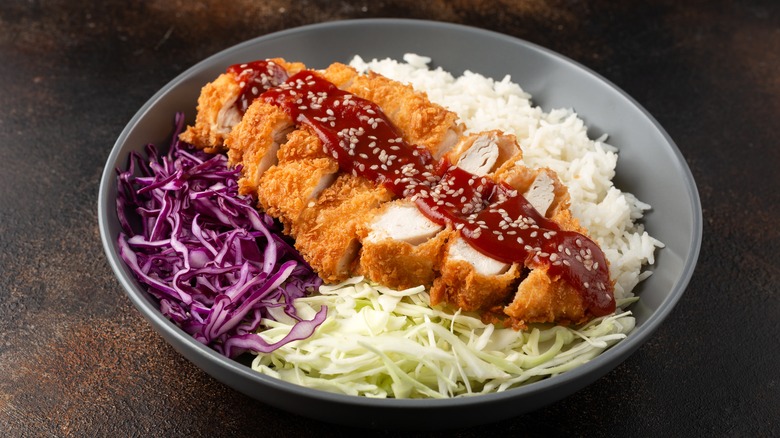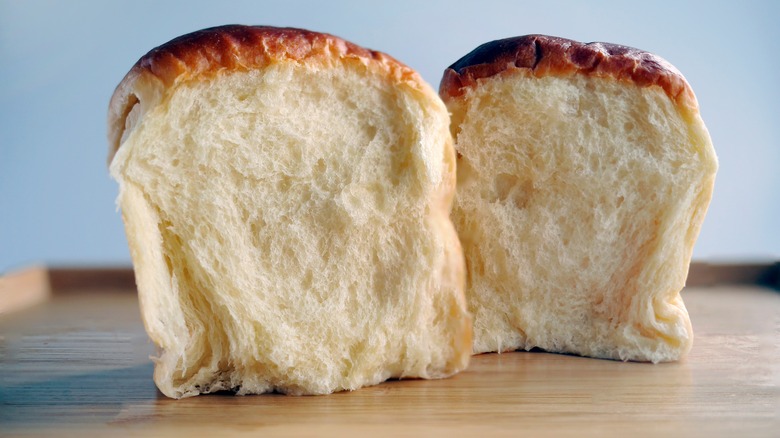The Expert-Approved Breading For Restaurant Quality Katsu
Katsu, Japan's answer to deep-fried breaded cutlets, is marked by a crispy exterior that gives way to juicy cuts of meat. Many Japanese chefs turn to panko to achieve this delicate balance, praising the popular Japanese breadcrumb variety for its airiness and wide surface area. When swapped with breadcrumbs, the dish gets maximum crunch without becoming greasy.
Chef Makoto Okuwa does things a little differently at his eponymous Colorado restaurant, Makoto Vail. The chef told Daily Meal that he dredges his cutlets in Japanese milk bread, preferring its "fluffiness and sweetness" over other types of breading.
His restaurant recently hosted David Beckham, whose satisfied smile suggests he may have tucked into Okuwa's signature Sakura Pork Tonkatsu. As seen on Instagram, the dish is billed as "crispy on the outside, juicy on the inside."
That might have something to do with Okuwa's knowledge of the best cut of pork to use for tonkatsu, but his breading gets equal credit. Here's how Okuwa's milk bread compares to panko.
Passing on panko
Japanese milk bread, also known as milk buns or shokupan, is essentially a cloud in bread form. It gets its unique fluffiness from a milky tangzhong starter, the key Japanese method for achieving ultra-tender bread, while its sweetness comes from sugar and honey. While it might resemble French brioche in shape and texture, its lack of eggs makes it less rich and heavy.
It makes perfect sense that Okuwa would turn to shokupan for katsu breading — when dried, its lightness indeed mimics the texture finish of panko, which is made from crustless white bread dried in a special oven that cooks the crumbs from the inside, making them extra crisp and light.
Here's where the two types of breading differ the most: While panko is notably bland in flavor, the ingredients in shokupan lend a subtle hint of sweetness to katsu. We can only imagine how well that sweetness plays with Okuwa's ginger chili sauce.

